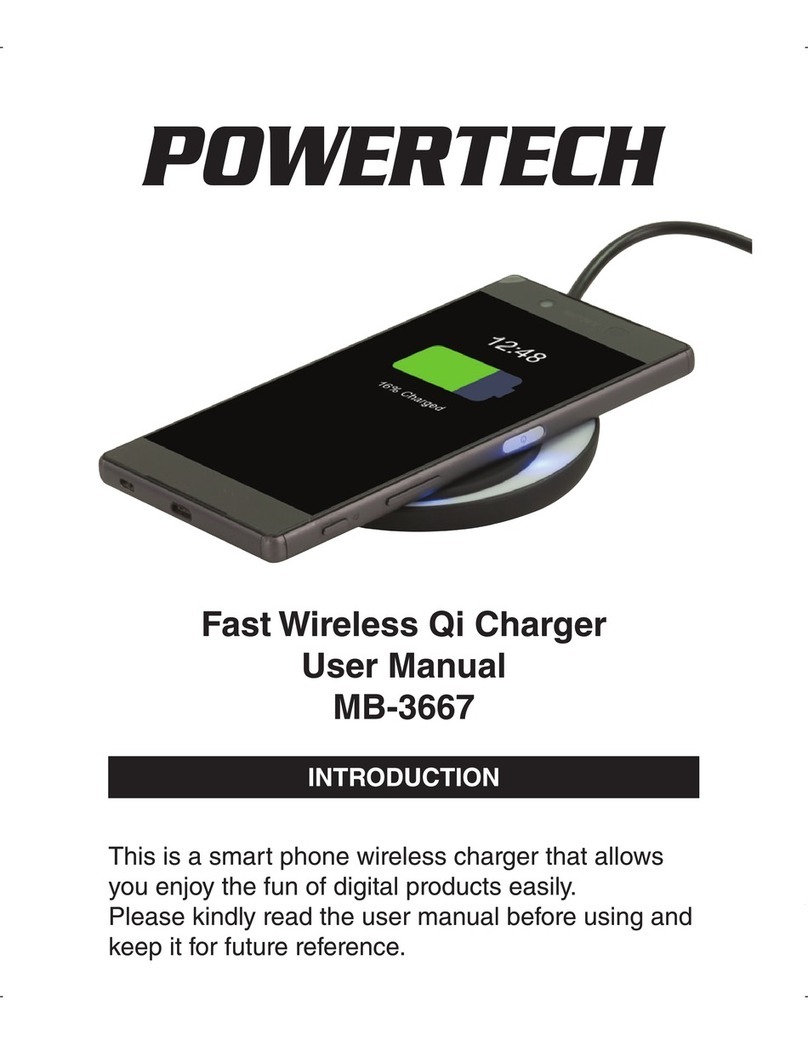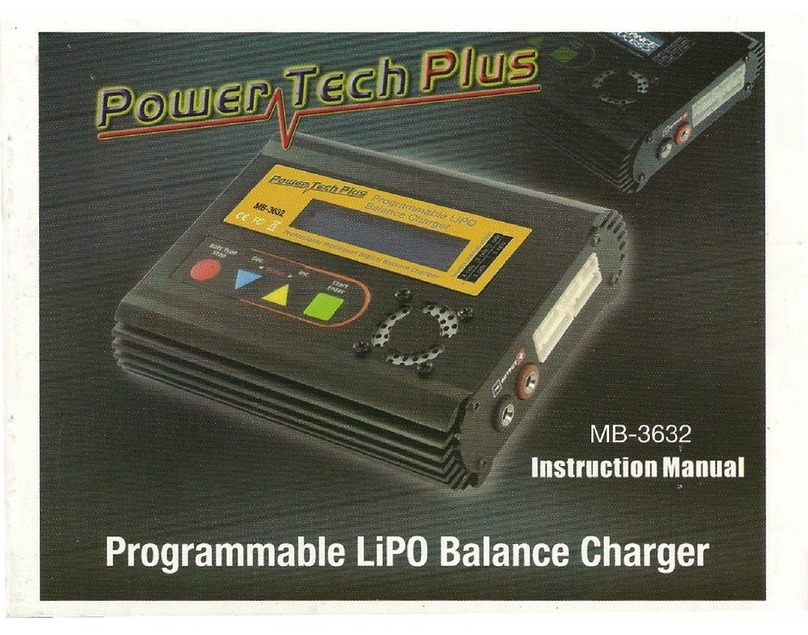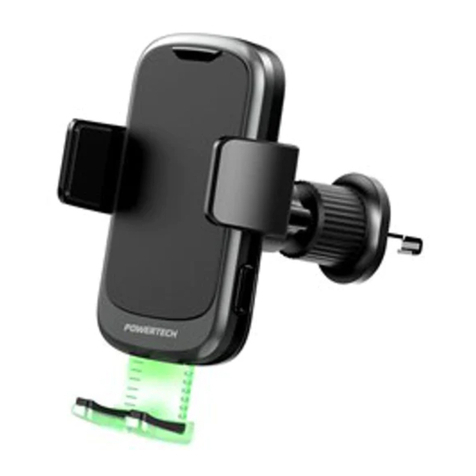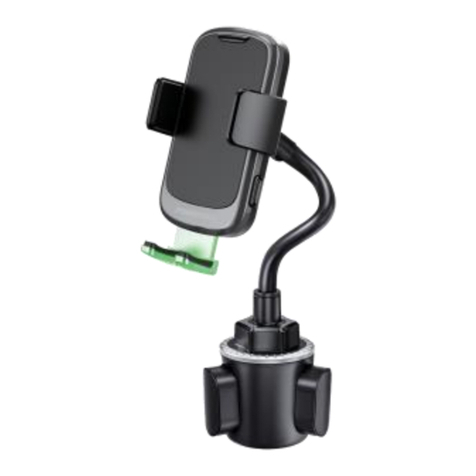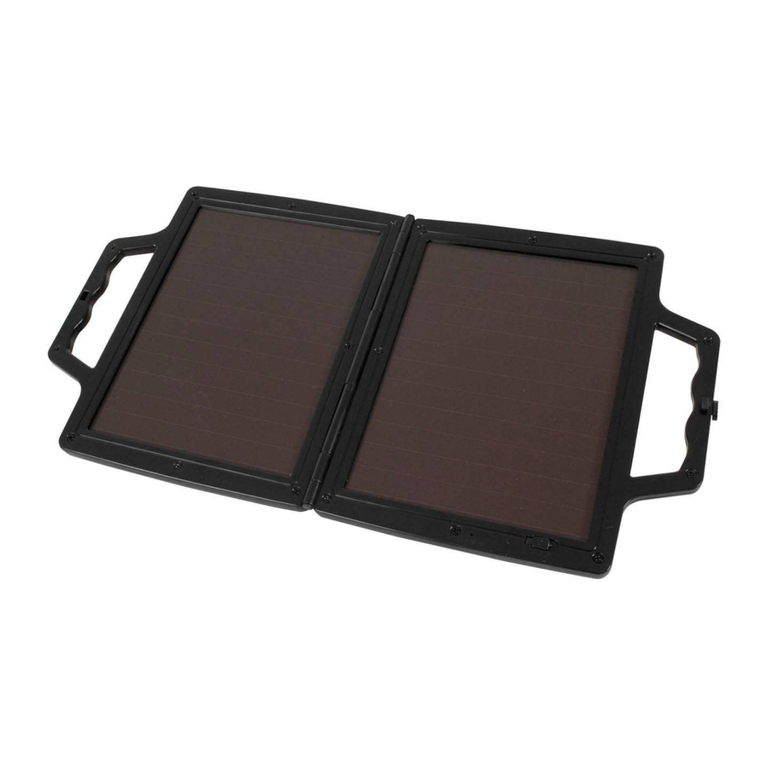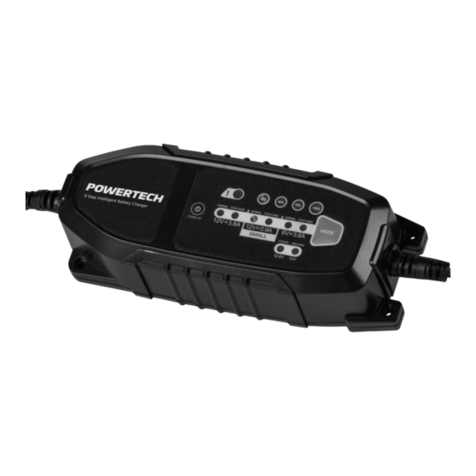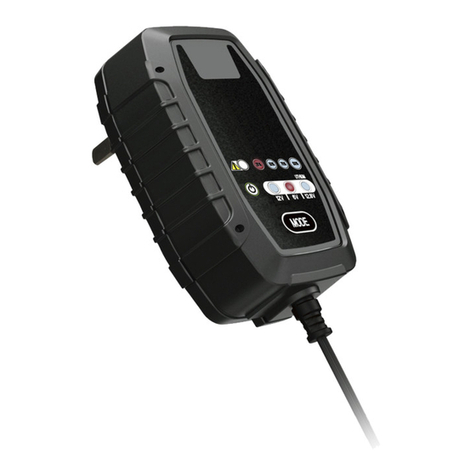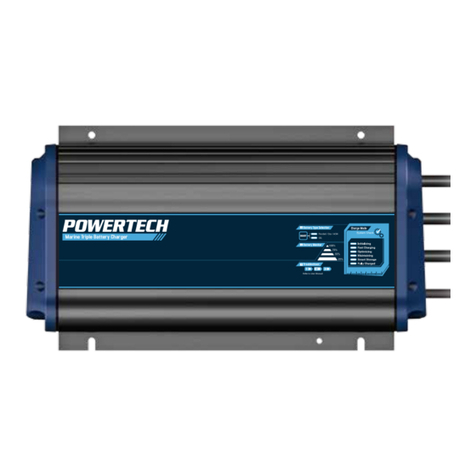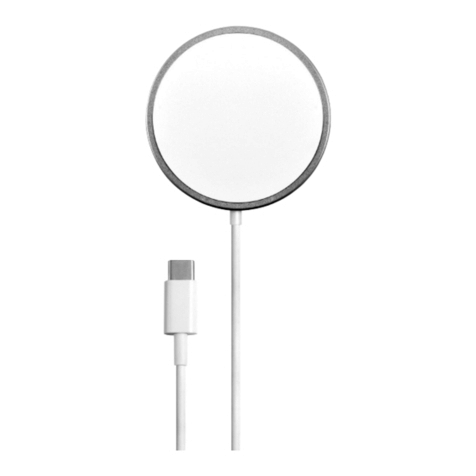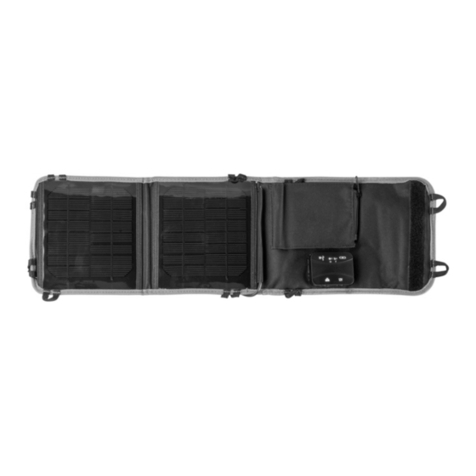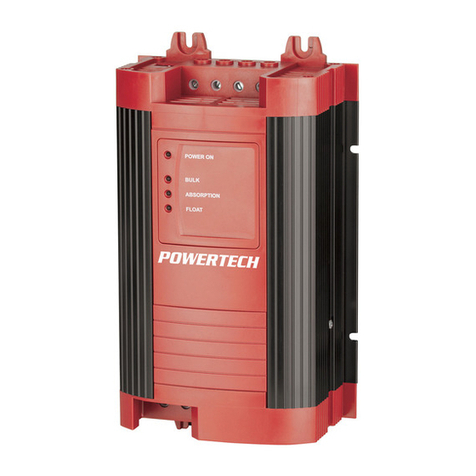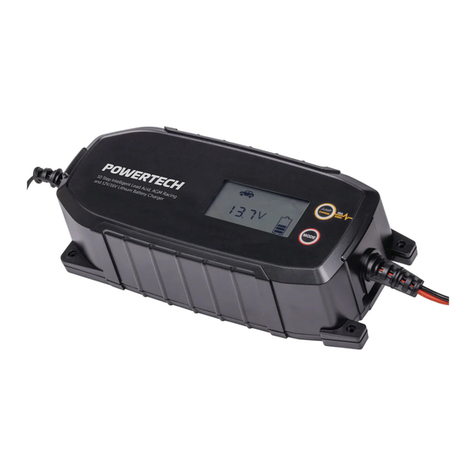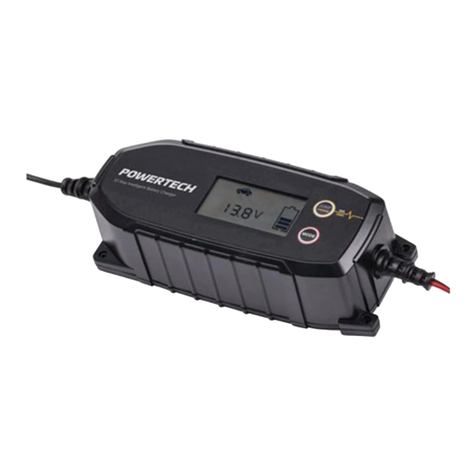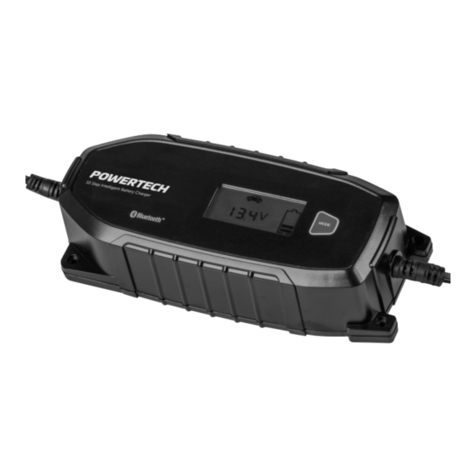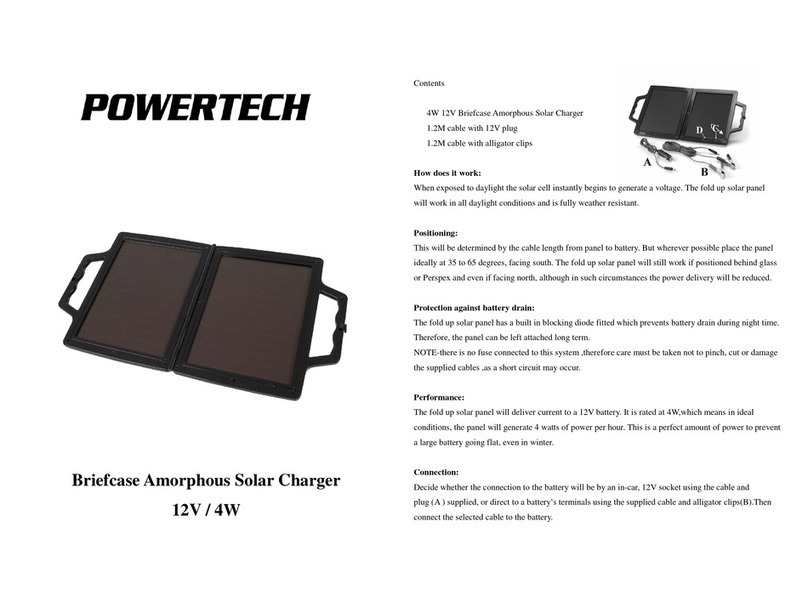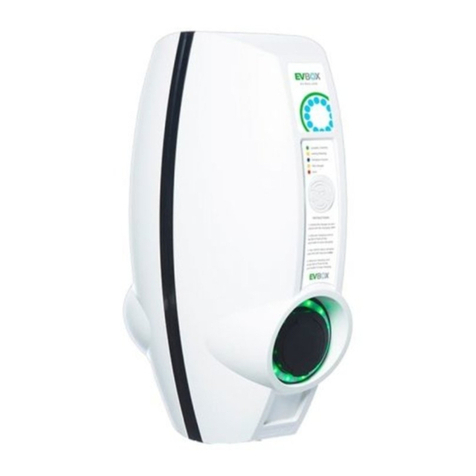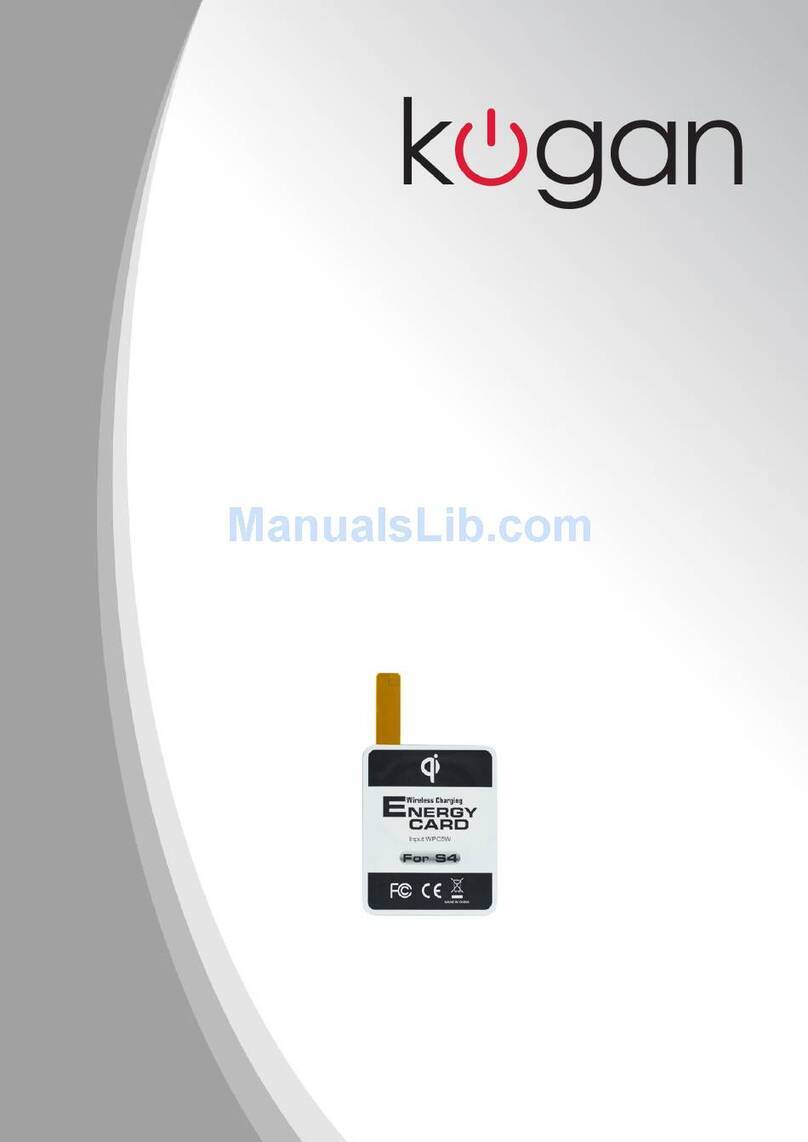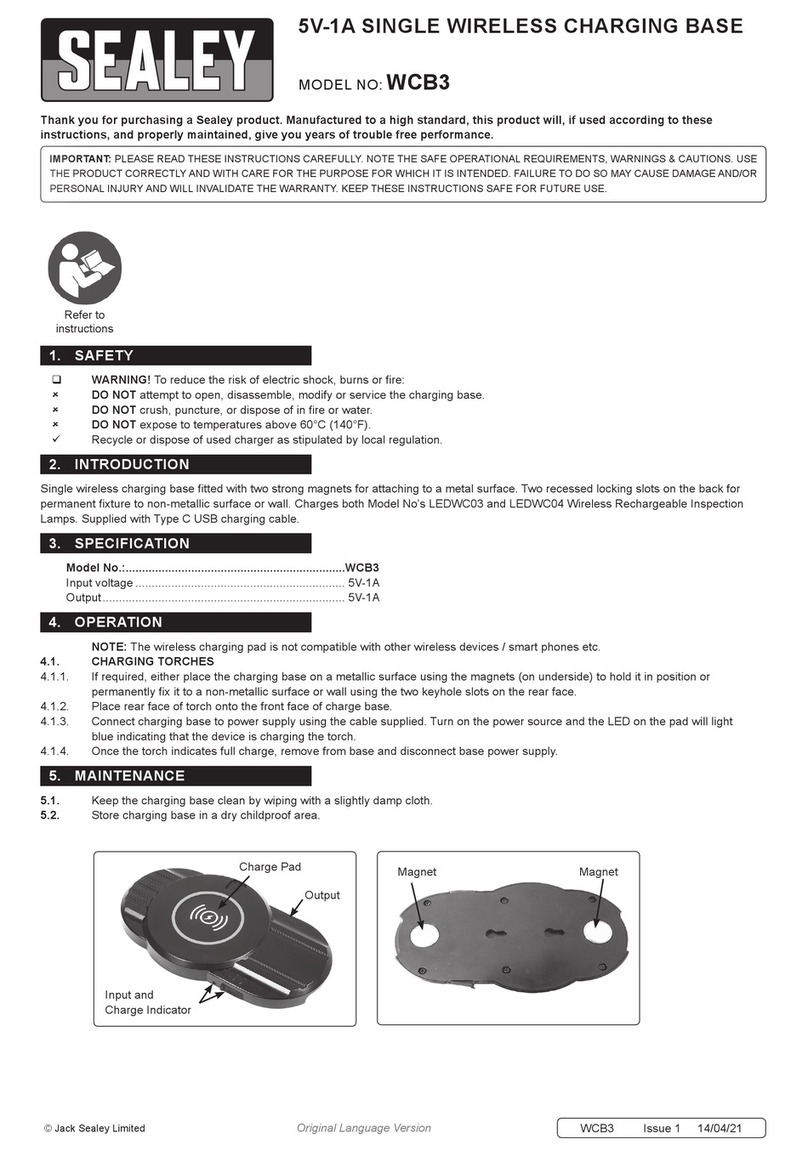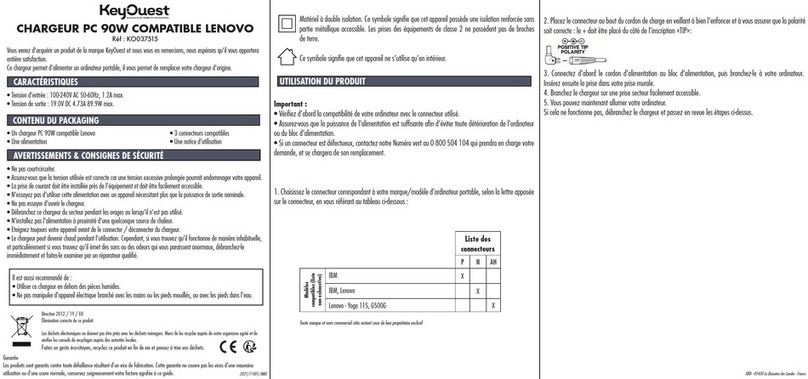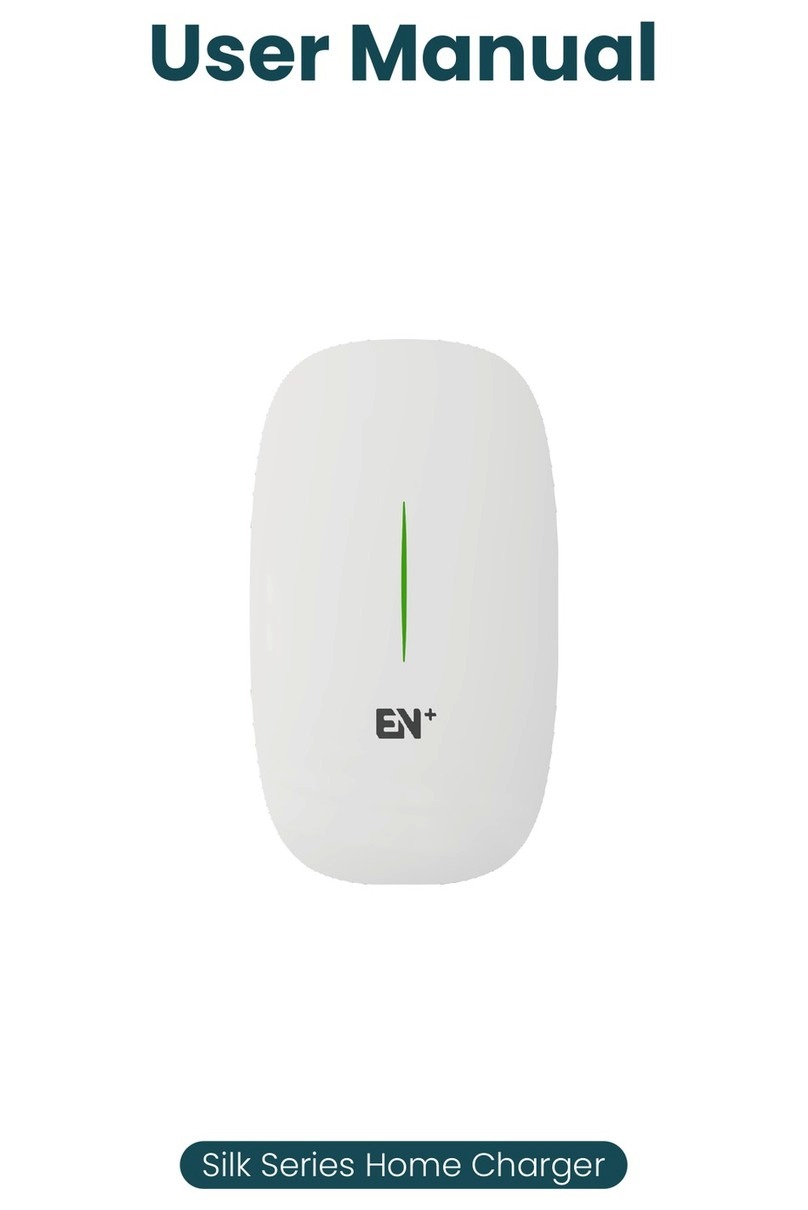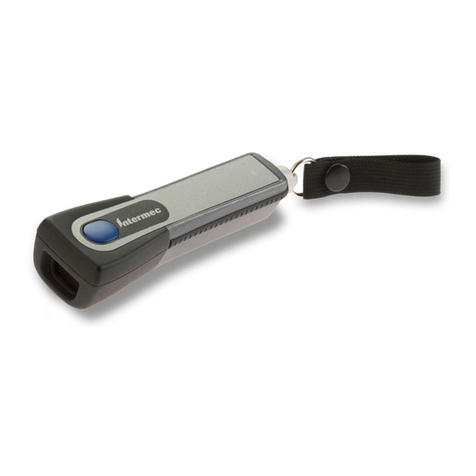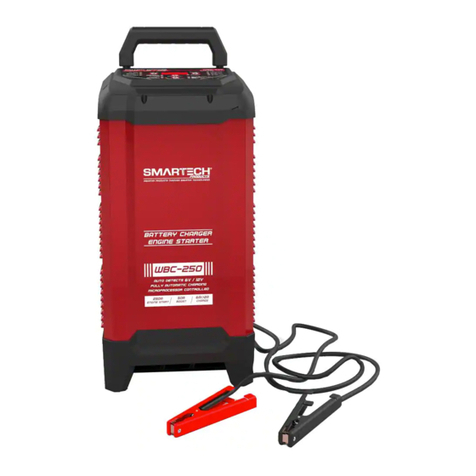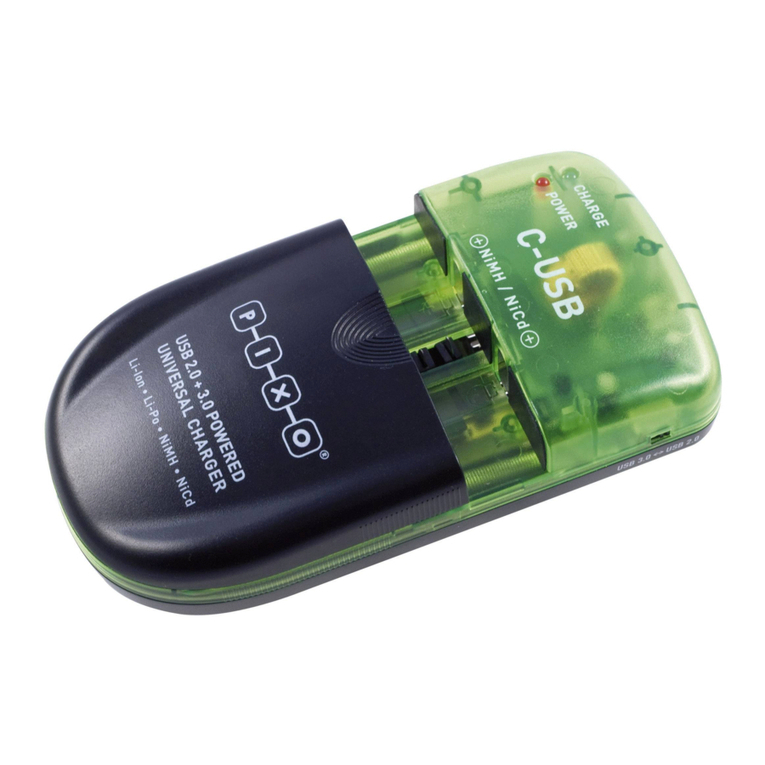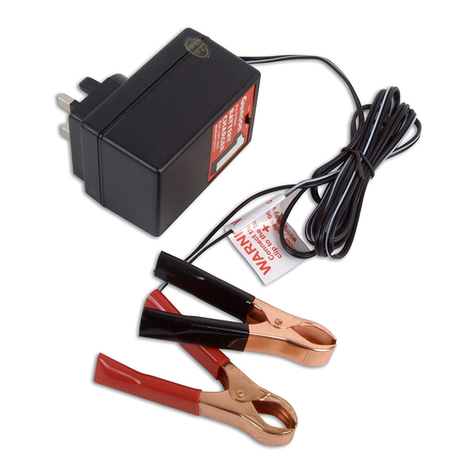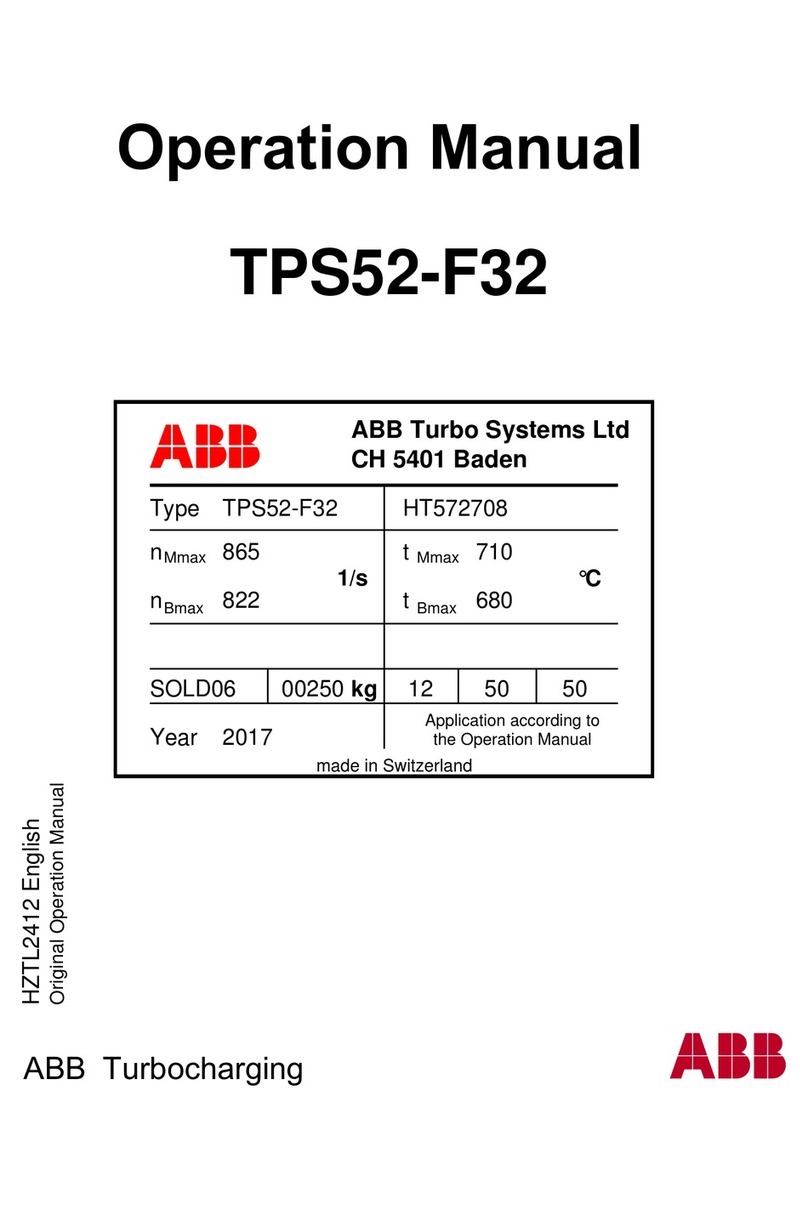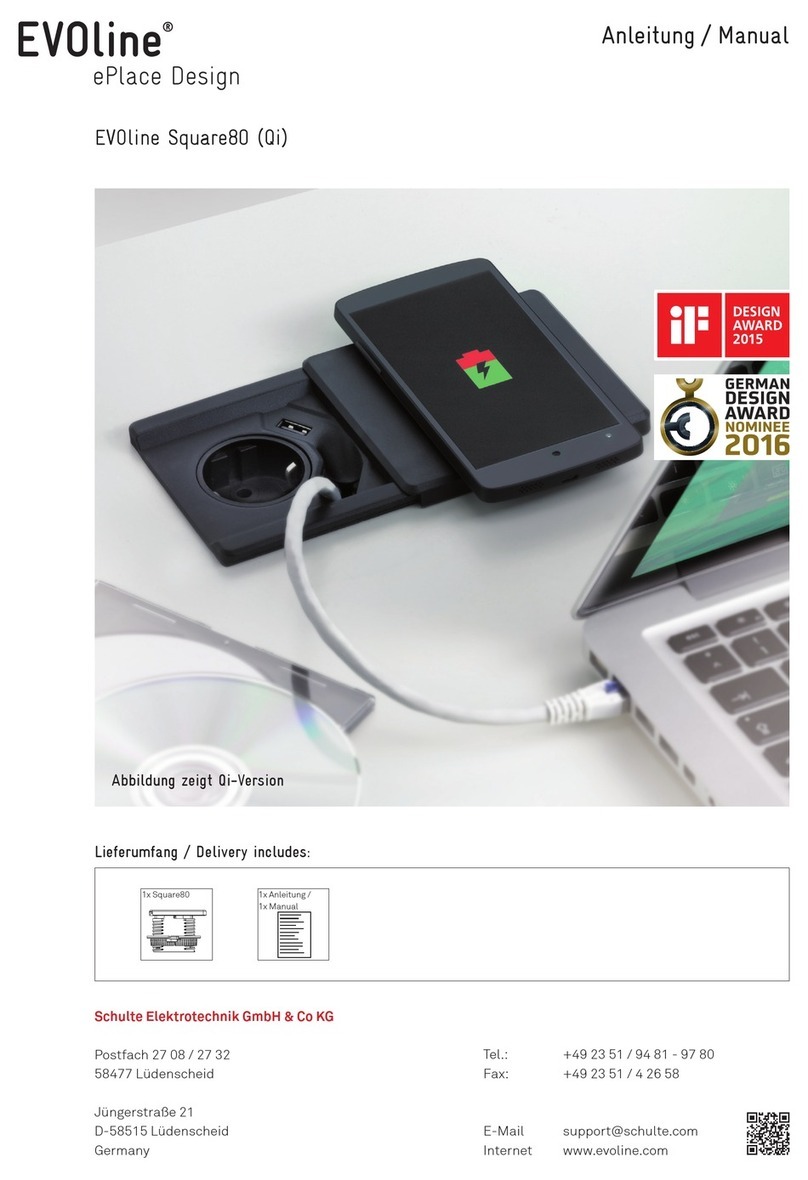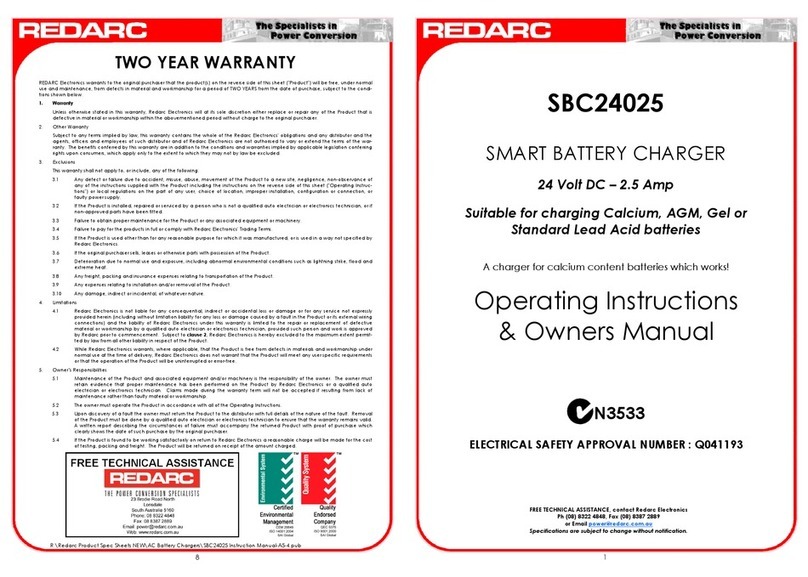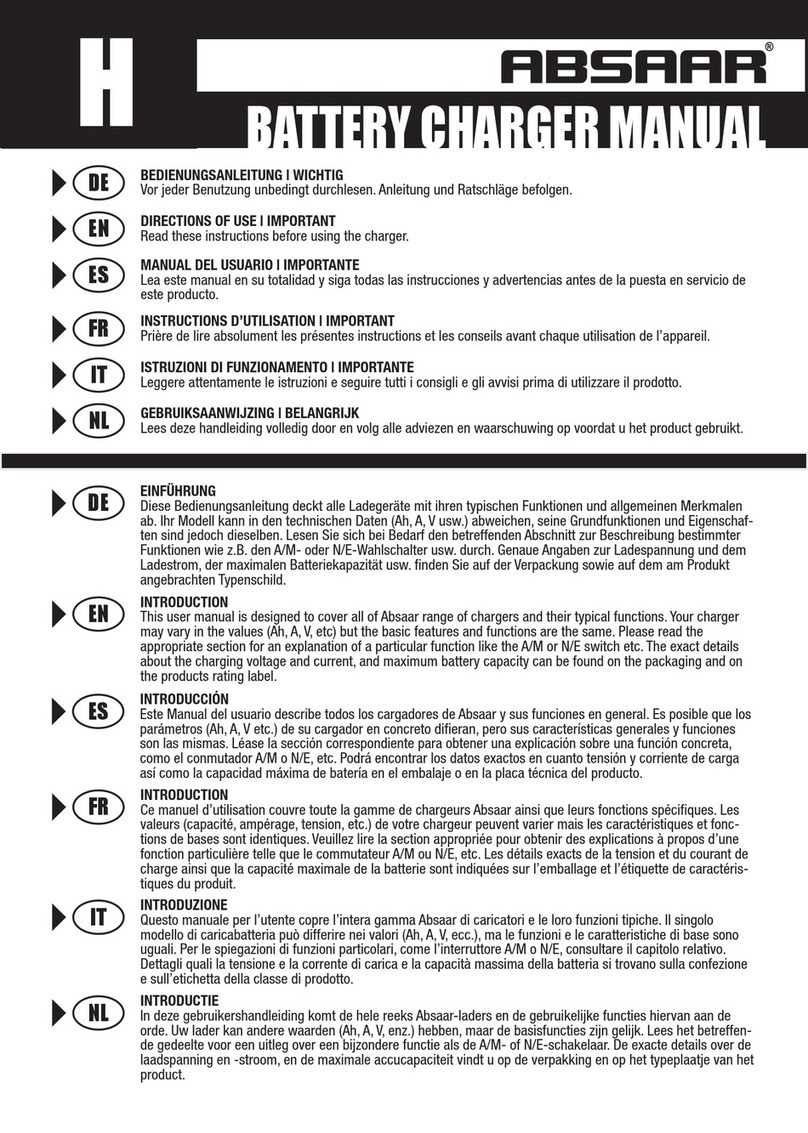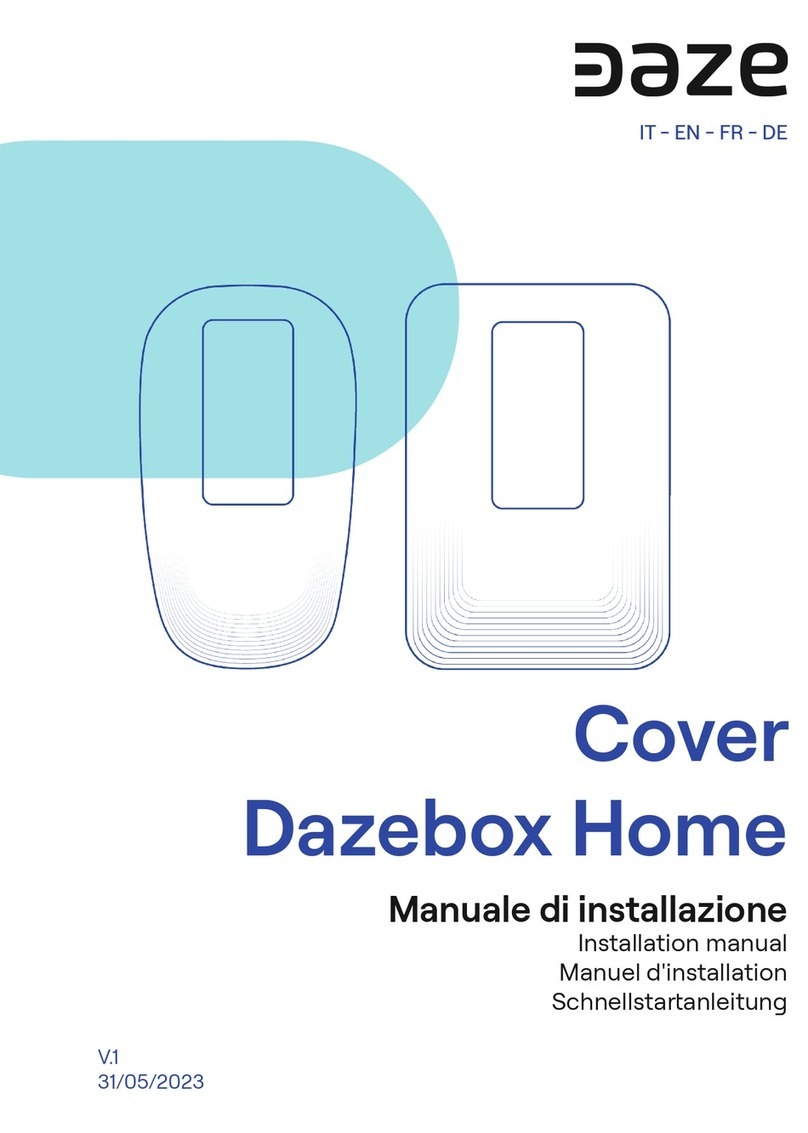
6
SAFETY INFORMATION:
DANGER OF CHEMICAL BURNS! Protect your eyes and skin
against chemical burns caused by acid (sulphuric acid) upon
contact with the battery!
Wear: Acid-resistant glasses, clothing and gloves! If your eyes or
skin come into contact with sulphuric acid, rinse the aected part
of the body with plenty of clear running water and seek immediate
medical assistance!
• Avoid causing an electrical short-circuit when connecting the battery
charger to the battery. Connect the minus pole connecting cable only to
the minus pole of the battery or to the car body. Connect the plus pole
connecting cable only to the plus pole of the battery!
• Before connecting to the mains, make sure that the mains current is
equipped with standard 230 V ~ 50 Hz, PEN conductor, a 16 A fuse and a
residual-current circuit-breaker! Otherwise the device could be damaged.
• Do not place the battery charger near fire, heat, or subject it to prolonged
temperatures of over 50 °C! The output from the battery charger drops
automatically in high temperatures.
• Avoid damaging any lines carrying fuel, electricity, brake fluid, hydraulic oil or
water. Be particularly careful not to cause damage when mounting the charger
in place with screws! Failure to observe this advice risks loss of life or injury!
• Use only the supplied original manufacturer’s parts with the battery charger!
• Do not allow any objects to cover the battery charger! Otherwise the device
could be damaged.
• Protect the electrical contacts of the battery against short-circuiting!
• Use the battery charger only for charging and maintenance charging of
undamaged 6 V / 12 V lead batteries (wet cell or gel electrolyte)! Otherwise
damage to property could occur.
• Do not use the battery charger for charging or maintenance charging of
disposable batteries. Otherwise damage to property could occur.
• Do not use the battery charger for charging or maintenance charging of
damaged or frozen batteries! Otherwise damage to property could occur.
• Before connecting the charging station, read the information on battery
maintenance in the operating instructions of the battery! Otherwise personal
injury and / or damage to the device could occur.
• Before connecting the charging station to a battery permanently installed
in a vehicle, read the information on electrical safety and maintenance in
the operating instructions of the vehicle! Otherwise personal injury and / or
damage to the device could occur.
• Unplug the charger from the mains supply when not being used! This also
benefits the environment. Consider how much electricity is consumed, even
in standby mode.
• Remain alert at all times and always watch what you are doing. Always
proceed with caution and do not use the battery charger if you cannot
concentrate or feel unwell.
• Do not charge non-rechargeable batteries
• Max. operation temperature: 40ºC
